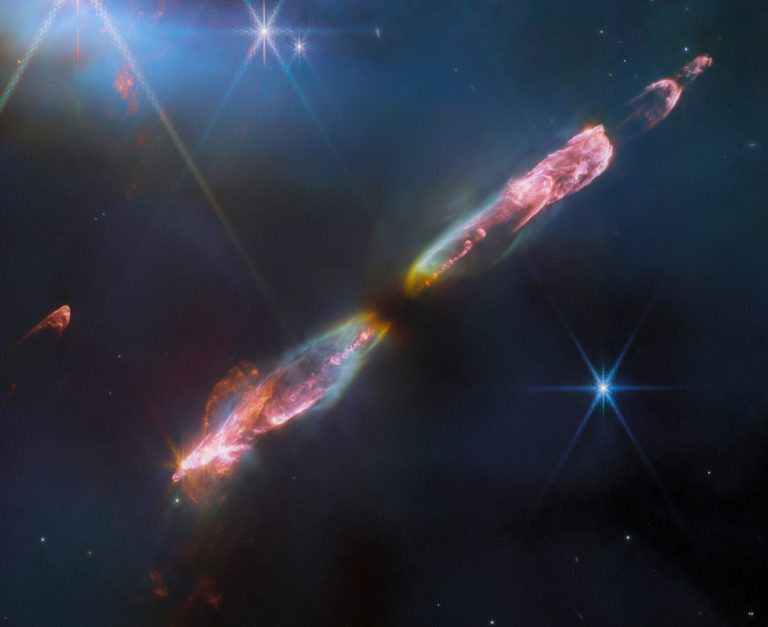The James Webb Space Telescope is a modern marvel, peering deep into the very ethers of the universe and seeing light from thousands of light-years away. Over the course of the past year and some months, the telescope has continued to wow us with its majestic observations, the latest of which showcases Webb’s ability to capture the outbursts of young stars.
While peering at a young protostar, Webb captured a beautiful and iconic image of the star releasing two jets of energy outward from itself. The jets are made up of star matter, which is seen blasting outward from the poles of the very young star. Scientists estimate the jets are moving through space at supersonic speeds.

Webb scientists named the event Herbig-Haro 211 (HH 211). The young star that is responsible for the jets is roughly 1,000 light-years away, in the constellation Perseus. While Webb’s observations of the young star don’t showcase the star itself, we can see the effects that it is having on the region as it sucks in surrounding gas and dust, allowing it to grow larger and larger.
James Webb has observed phenomena like this several times during its tenure observing the universe. The space telescope even spotted our first glimpse at starlight from ancient quasars earlier this year, and it continues to help us unravel the mysteries of the early universe with every observation that scientists make into the deep cosmos.
This latest image of the young star releasing bursts of energy is both beautiful and a reminder of just how exciting our universe is, especially when stars are young and full of the bursting energy we can see here. Scientists believe the young star Webb observed will eventually form into a full-fledged binary star, and it likely represents what our sun used to look like when it was still just a few tens of thousands of years old, and with a very small percentage of its current mass.








